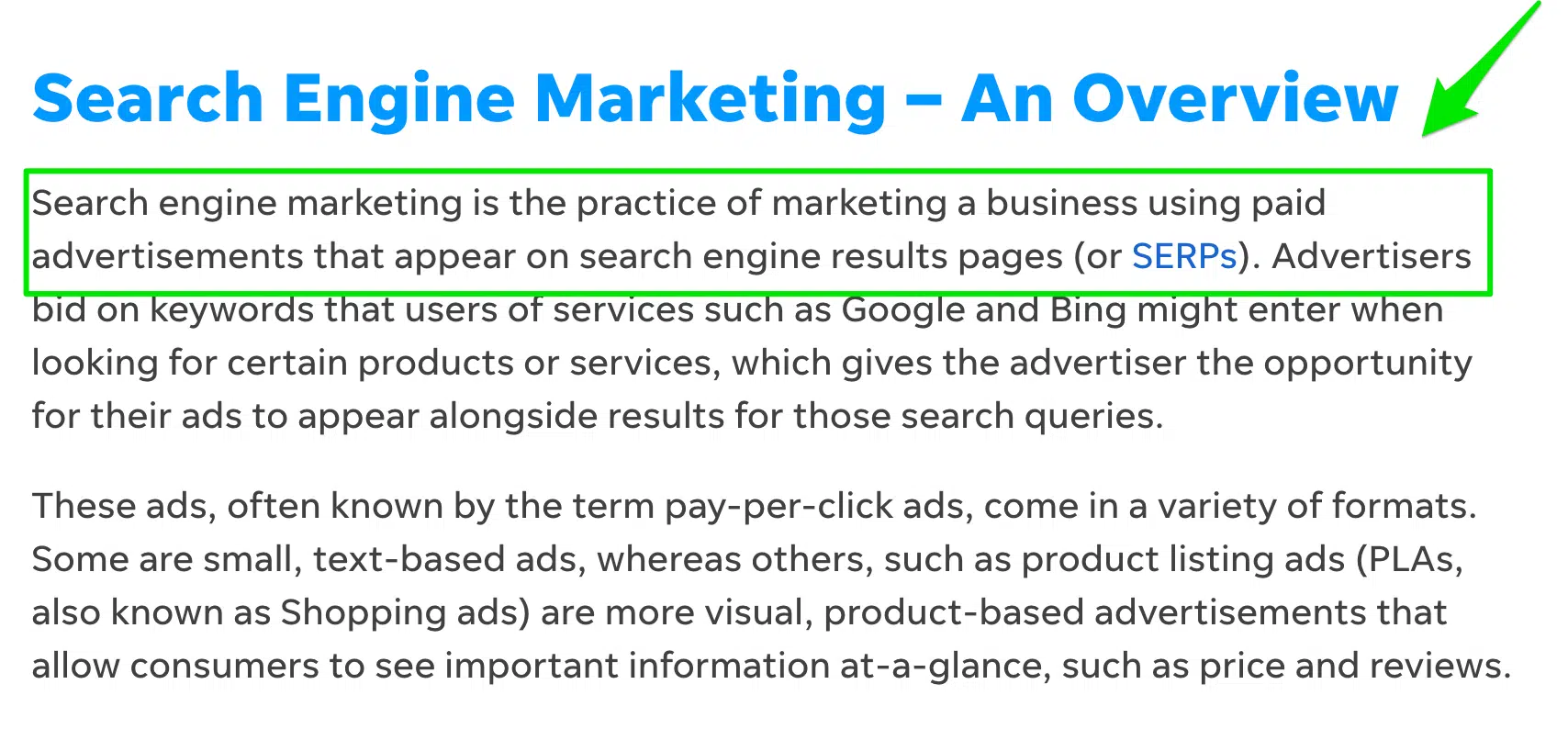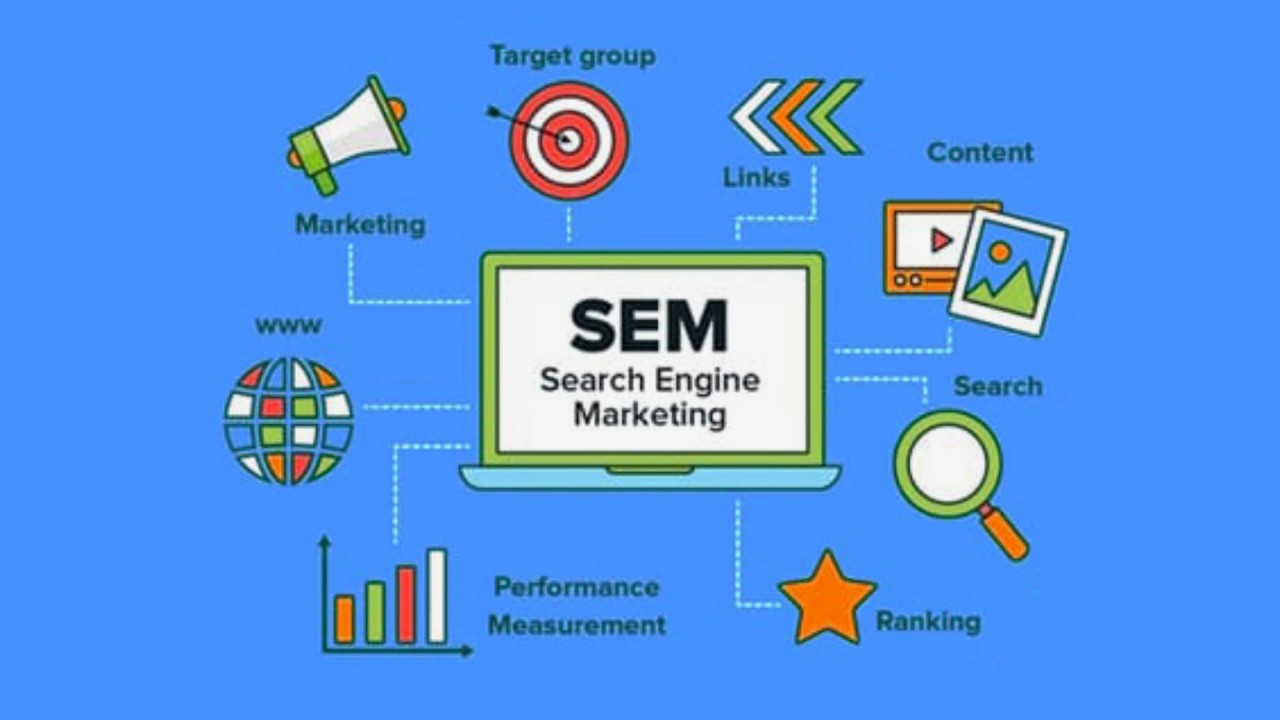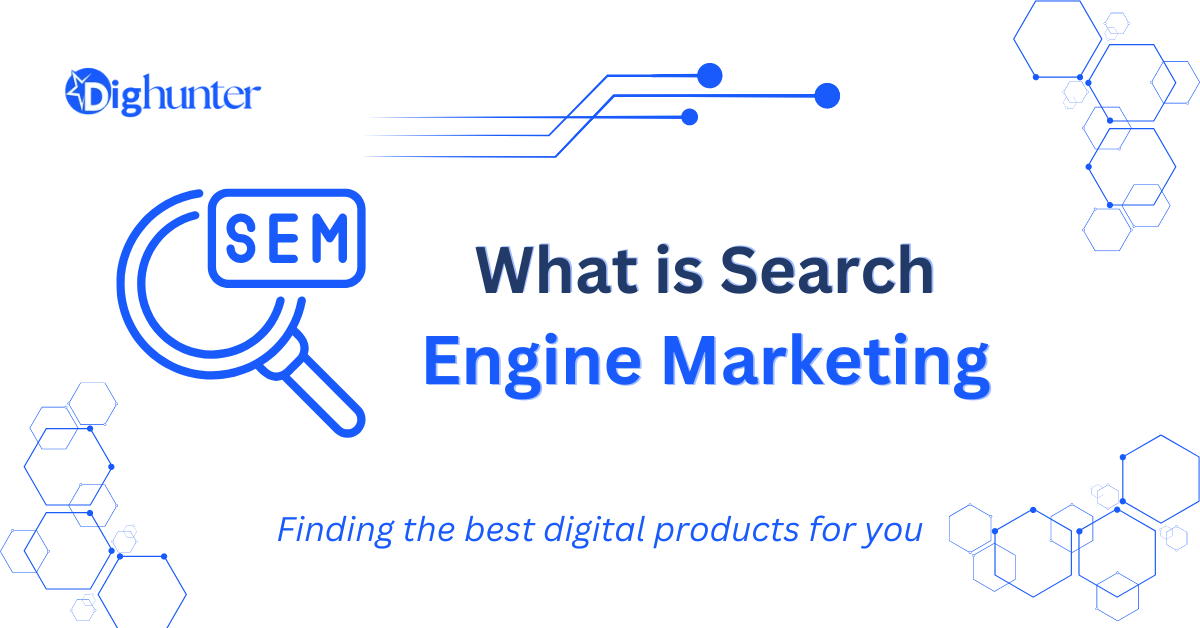Search Engine Marketing (SEM) involves promoting websites by increasing their visibility in search engine results through paid advertising. It combines SEO and paid search advertising.
Search Engine Marketing (SEM) is a crucial strategy for businesses looking to increase their online presence. By targeting specific keywords, businesses can attract potential customers actively searching for their products or services. SEM includes paid search ads, which appear at the top of search engine results pages, ensuring maximum visibility.
This strategy allows for precise audience targeting and measurable results. Investing in SEM can lead to increased website traffic, higher conversion rates, and improved brand recognition. Businesses can optimize their advertising budget and achieve significant returns by leveraging SEM effectively.
➡️Components of SEM
Search Engine Marketing (SEM) is a powerful tool for digital marketing. It helps businesses gain visibility on search engines. SEM includes several key components. These components work together to drive traffic and increase conversions.
Paid Search Ads
Paid search ads are a core component of SEM. These ads appear on search engine results pages (SERPs). Businesses pay for these ads based on clicks or impressions. Paid ads can target specific keywords. This helps reach the right audience at the right time.
There are different types of paid search ads:
- Text Ads: Simple ads with text only.
- Shopping Ads: Show product images and prices.
- Display Ads: Visual ads on websites and apps.
Each type of ad serves a unique purpose. Together, they can create a comprehensive marketing strategy.
SEO Vs SEM
Search Engine Optimization (SEO) and SEM are related but different. SEO focuses on organic search results. It involves optimizing a website to rank higher on SERPs.
SEM includes SEO but also uses paid search ads. Here’s a comparison:
| SEO | SEM |
|---|---|
| Organic traffic | Paid traffic |
| Long-term results | Immediate results |
| Content optimization | Ad campaigns |
Both SEO and SEM aim to increase visibility. They can be used together for better results.

Credit: searchengineland.com
Keyword Research
Keyword research is the backbone of Search Engine Marketing (SEM). It helps in discovering the terms your audience uses. By targeting the right keywords, you can attract more visitors. This boosts your website’s visibility and rankings. Let’s dive into how you can find the right keywords and the tools you can use.
Finding The Right Keywords
Finding the right keywords requires understanding your audience. Think about what they might search for. Start with broad terms related to your business. Break these down into more specific phrases. Here are some steps to help you:
- Brainstorm a list of relevant topics.
- Use a keyword tool to expand these topics.
- Analyze the competition for each keyword.
- Choose keywords with high search volume and low competition.
Tools For Keyword Research
Using the right keyword research tools can make keyword research easier. Here are some popular options:
| Tool | Features |
|---|---|
| Google Keyword Planner | Free, accurate data, integrates with Google Ads |
| SEMrush | Comprehensive, competitor analysis, keyword tracking |
| Ahrefs | Large database, detailed metrics, backlink analysis |
| Ubersuggest | Free version, keyword ideas, SEO audit |
Each tool offers unique features. Choose one that fits your needs. Start with free tools if you’re new to SEM. As you grow, consider investing in paid tools for deeper insights.
➡️Creating Effective Ads
Creating effective ads is crucial for successful Search Engine Marketing (SEM). An ad’s effectiveness can greatly impact your campaign’s performance. Let’s explore how to create ads that convert. We’ll focus on two key areas: Crafting Compelling Ad Copy and Choosing the Right Ad Format.
Crafting Compelling Ad Copy
Compelling ad copy grabs attention and drives clicks. Here are some tips:
- Use Strong Headlines: A catchy headline draws attention quickly.
- Include Keywords: Use relevant keywords to match search queries.
- Clear Call to Action: Tell users what to do next, like “Buy Now” or “Learn More”.
- Highlight Benefits: Show users what they gain by clicking your ad.
Example:
Headline: Best Running Shoes for Kids Description: Durable and comfortable. Buy now and get 20% off!
Choosing The Right Ad Format
The right ad format can boost engagement. Different formats serve different purposes. Here’s a comparison:
| Ad Format | Best For | Example |
|---|---|---|
| Text Ads | Quick Info | Simple headlines and descriptions |
| Image Ads | Visual Appeal | Eye-catching images with minimal text |
| Video Ads | Engagement | Short videos explaining your product |
Choose the format that best fits your campaign goals. A well-crafted ad can significantly improve your SEM results.
➡️Budget Management
Effective Budget Management is crucial for successful Search Engine Marketing (SEM). Managing your budget ensures you get the best results without overspending. Here’s how to handle it efficiently.
Setting A Budget
Start by deciding how much you can spend. Consider your overall marketing budget. Allocate a portion specifically for SEM. Use historical data to guide your decisions. Look at past campaigns to see what worked. Identify where you spent too much. Use this information to set a realistic budget.
Consider using a monthly budget. This helps in tracking expenses easily. It also ensures you do not overspend. Break down your budget into smaller parts. Decide how much to spend on each keyword. Allocate funds for different ad groups. This method ensures every area gets attention.
Bidding Strategies
Choosing the right bidding strategy is essential. It affects your ad placement and costs. Here are some common bidding strategies:
- Manual CPC: You set your bids manually. This gives you full control over each keyword bid.
- Enhanced CPC: Google adjusts your manual bids. This aims to get you more conversions.
- Target CPA: Set a target cost-per-acquisition. Google optimizes your bids to achieve this goal.
- Maximize Clicks: Google aims to get as many clicks as possible within your budget.
- Target ROAS: Set a target return on ad spend. Google adjusts bids to meet this return.
Use a mix of these strategies. Test to see what works best. Monitor your results regularly. Adjust your bids based on performance. This approach ensures efficient use of your budget.
Here’s a table summarizing the bidding strategies:
| Bidding Strategy | Description |
|---|---|
| Manual CPC | Full control over each bid. |
| Enhanced CPC | Google adjusts bids for more conversions. |
| Target CPA | Sets a target cost-per-acquisition. |
| Maximize Clicks | Aims for maximum clicks within budget. |
| Target ROAS | Sets a target return on ad spend. |
Effective budget management in SEM involves setting a budget and choosing the right bidding strategies. These steps ensure your funds are used wisely.
➡️Tracking And Analytics
Tracking and analytics are vital in Search Engine Marketing (SEM). They help you understand the performance of your campaigns. With accurate tracking, you can make data-driven decisions. This section will cover how to monitor campaign performance and key metrics to track.
Monitoring Campaign Performance
Monitoring campaign performance is crucial. It helps you see if your efforts are paying off. You can identify which ads and keywords are working best. Use tools like Google Analytics and SEMrush to track your campaigns.
Set up dashboards to get real-time data. Dashboards make it easy to see key metrics. Monitor these metrics daily to spot trends.
| Tool | Purpose |
|---|---|
| Google Analytics | Tracks website traffic and user behavior. |
| SEMrush | Analyzes keyword performance and competitors. |
Key Metrics To Track
Tracking the right metrics is important for SEM success. Here are some key metrics to focus on:
- Click-Through Rate (CTR): Measures the percentage of clicks on your ads.
- Conversion Rate: Indicates the percentage of visitors who complete a desired action.
- Cost Per Click (CPC): Shows how much you pay for each click on your ad.
- Return on Ad Spend (ROAS): Calculates the revenue generated for every dollar spent on ads.
Use these metrics to gauge the effectiveness of your campaigns. Adjust your strategies based on these insights to improve performance.
By focusing on tracking and analytics, you can optimize your SEM efforts. This helps you achieve better results and higher ROI.

Credit: www.linkedin.com
➡️Optimizing Your Campaign
Enhancing your Search Engine Marketing (SEM) campaign is crucial. By optimizing, you can achieve better results and reduce costs. Here are some key strategies to help you improve your SEM efforts.
A/b Testing
A/B Testing is a powerful tool. It allows you to compare two versions of a web page or ad. By testing, you can see which version performs better.
Follow these steps for effective A/B Testing:
- Create two versions of your ad.
- Change only one element at a time.
- Run the ads simultaneously.
- Measure the performance of each ad.
- Choose the better-performing ad.
Test elements like:
- Headlines
- Call-to-Action (CTA) text
- Images
- Ad copy
Improving Quality Score
Your Quality Score impacts your ad rank and cost-per-click (CPC). A higher score means better ad placement and lower costs.
Here are tips to improve your Quality Score:
| Tip | Description |
|---|---|
| Keyword Relevance | Ensure your keywords match your ad content. |
| Ad Relevance | Make your ads relevant to your keywords and landing page. |
| Landing Page Quality | Create landing pages that provide a good user experience. |
| CTR | Improve your click-through rate (CTR) by making compelling ads. |
By optimizing your campaign, you can boost performance and reduce costs. Implement these strategies to see better results from your SEM efforts.
➡️Common Sem Mistakes in SEM
Search Engine Marketing (SEM) can boost your online presence. But many make mistakes that hinder success. Here are common SEM mistakes to avoid.
Avoiding Keyword Stuffing
Keyword stuffing is a common mistake in SEM. This involves overusing keywords in ads or content. It makes your content look spammy.
Google penalizes sites that use keyword stuffing. You should focus on natural keyword integration. Use keywords naturally within your ads and content. This will keep your content readable and user-friendly.
- Use keywords in titles and headings.
- Include keywords in the first 100 words.
- Spread keywords evenly throughout the content.
Preventing Ad Fatigue
Ad fatigue happens when users see the same ad too often. This leads to decreased engagement and wasted budget. To prevent ad fatigue, rotate your ads regularly.
Create multiple versions of your ads. Test different headlines, images, and calls to action. This keeps your audience engaged and improves your ad performance.
| Ad Element | Variation Ideas |
|---|---|
| Headlines | Use different benefits or features |
| Images | Use different images or graphics |
| Calls to Action | Test different phrases like “Buy Now” or “Learn More” |

Credit: www.semrush.com
➡️Future of SEM
The future of Search Engine Marketing (SEM) is exciting. It is evolving rapidly. New technologies and strategies are emerging. Businesses must stay updated to remain competitive. This section explores the future of SEM.
Emerging Trends
Several trends are shaping the future of SEM. These trends help businesses reach their target audience more effectively.
- Voice Search: More people use voice assistants. SEM strategies must adapt to voice search.
- Visual Search: Visual search is growing. Users can search using images.
- Mobile Optimization: Mobile searches are increasing. SEM must focus on mobile-friendly content.
- Personalization: Personalized ads are more effective. SEM must use data to create personalized experiences.
Impact of AI
Artificial Intelligence (AI) is transforming SEM. AI tools are making SEM more efficient and effective.
| AI Application | Impact on SEM |
|---|---|
| Keyword Research | AI tools find the best keywords quickly. |
| Ad Optimization | AI optimizes ads for better performance. |
| Predictive Analysis | AI predicts trends and user behavior. |
| Chatbots | AI chatbots improve user engagement. |
➡️Frequently Asked Questions
- What Is Search Engine Marketing?
Search Engine Marketing (SEM) involves promoting websites by increasing their visibility in search engine results. This is achieved through paid advertising and optimization techniques.
- How Does Sem Work?
SEM works by placing ads on search engine results pages. These ads target specific keywords and demographics to reach potential customers effectively.
- Why Is Sem Important?
SEM is important because it drives targeted traffic to your website. It helps improve brand awareness and generates leads and sales.
- What Are The Benefits Of Sem?
The benefits of SEM include immediate visibility, targeted audience reach, measurable results, and enhanced brand recognition. It complements other marketing strategies.
➡️Final Thought
Mastering Search Engine Marketing is crucial for online success. Implement strategies to boost visibility and drive traffic. Continuously monitor and optimize your campaigns. Stay updated with trends to maintain a competitive edge. Effective SEM can significantly enhance your brand’s online presence and conversion rates.
Start refining your SEM approach today.




